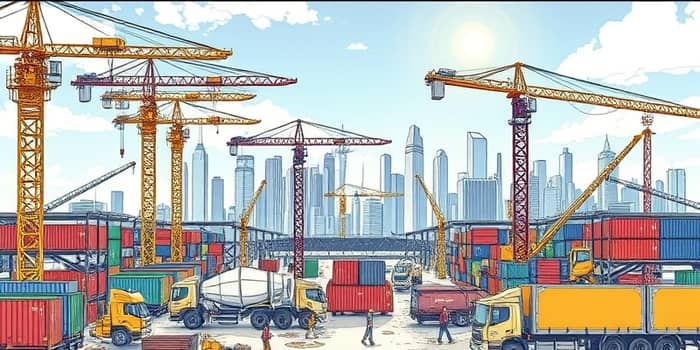
At the heart of every flourishing economy lies its infrastructure: the roads we travel, the bridges we cross, and the ports that connect us to the world. Today, the United States stands at a crossroads, facing both an unprecedented opportunity and a pressing challenge. Amidst growing calls for modernization, policymakers and investors alike recognize that strategic public infrastructure investment is essential to sustain economic vitality and global competitiveness.
In this article, we explore how targeted infrastructure spending acts as a powerful catalyst, driving a surge in demand for both materials and logistics services. Beyond raw numbers, we uncover the human stories of innovation, efficiency, and resilience reshaping the supply chains that underpin our daily lives.
According to the 2025 Report Card issued by the American Society of Civil Engineers (ASCE), the United States requires 9.1 trillion dollars of funding across 18 asset categories to achieve a state of good repair. Projections indicate that from 2024–2033, public and private investment will total roughly $5.4 trillion, leaving a substantial funding gap.
This shortfall, estimated between 3.7 and 4.4 trillion dollars, reflects expanded areas such as broadband, dams, parks, and schools. In 2023 alone, federal, state, and local governments committed $625.8 billion to transportation and water infrastructure—numbers rarely seen in peacetime budgets.
As projects break ground across the nation, the call for construction materials has never been louder. Suppliers of steel, cement, aggregates, and asphalt are ramping up operations, while manufacturers of copper wiring, specialty metals, and advanced composites find themselves at the vanguard of this expansion.
Energy infrastructure upgrades, including grid modernization and renewable installations, further fuel demand for critical components. Data center construction, industrial facilities, and utility-scale solar farms all require massive volumes of raw materials, sometimes stretching supply chains to their limits and introducing price volatility.
Efficient logistics are both a beneficiary and a prerequisite of infrastructure upgrades. Projects often rely on just-in-time delivery scheduling models to ensure materials arrive precisely when needed, minimizing storage costs and project delays.
Investments in roads, ports, and airports streamline the movement of goods, creating a virtuous cycle: improved infrastructure lowers transportation costs and transit times, while robust logistics networks attract further investments.
Infrastructure spending delivers substantial economic dividends, generating multiplier effects across industries. For every dollar invested, economists estimate up to $2 of added economic output, echoing the critical role these investments play in sustaining growth.
Yet the dangers of inaction loom large. The ASCE warns that failing to address infrastructure gaps could wipe out $5 trillion in GDP and cost 344,000 jobs in a single year by 2033.
Beyond job creation, improved transportation networks enhance property values, enable regional specialization, and support economies of scale that drive down production costs.
Different segments of the economy stand to benefit in unique ways:
These focused investments not only drive specialized material needs but also spur technological innovation in construction methods, such as modular assembly and 3D printing of building components.
Despite unprecedented spending, critics question whether funds are allocated efficiently. Some argue that precise targeted investment strategies could yield better outcomes than broad, unfocused disbursements.
Supply chain resiliency remains a concern, as surges in demand have the potential to strain global producers and generate price spikes. Addressing these risks requires enhanced planning, increased domestic production capacity, and diversified sourcing strategies.
The infrastructure wave presents a wealth of opportunities for committed stakeholders. Manufacturers of building materials, heavy machinery, and logistics providers stand at the forefront of this growth trajectory.
By aligning investments with emerging trends—such as electrification, automation, and digital connectivity—participants can secure lasting competitive advantages.
Infrastructure spending is far more than an expenditure line on a balance sheet: it is a strategic investment in the future of our economy, our communities, and our shared prosperity. When designed and executed with precision, these projects create strong and resilient supply chains, spur innovation, and unlock economic potential across every region.
As we navigate the coming decade, cooperation between governments, private sector leaders, and local stakeholders will be essential to bridge funding gaps, harness new technologies, and ensure that every dollar invested leaves an indelible mark on our nation’s growth story.
Together, we can transform challenges into catalysts for progress, building a foundation that supports both present needs and tomorrow’s aspirations.
References













